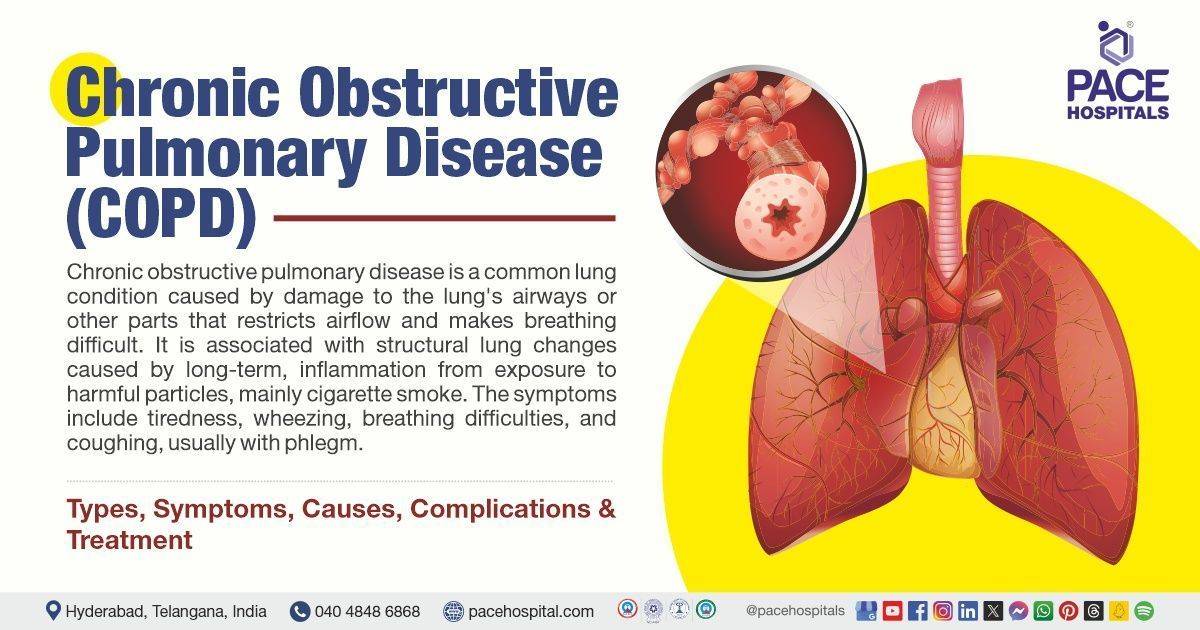Living with COPD: A Guide to Breathing Easier
Imagine trying to breathe through a narrow straw—that’s how many people with Chronic Obstructive Pulmonary Disease (COPD) feel every day. COPD is a long-term lung condition that makes it hard to breathe and affects daily life. But with the right care, support, and strategies, you can manage it and still enjoy life.
What Is COPD?
COPD is a group of lung diseases that includes two main problems:
1. Chronic Bronchitis: This causes long-term swelling and irritation in the airways, leading to constant coughing and mucus buildup.
2. Emphysema: This damages the air sacs in the lungs, making it harder for oxygen to move into the bloodstream.
- The most common cause of COPD is smoking, but long-term exposure to harmful chemicals, dust, or air pollution can also lead to the condition.
Recognizing the Signs of COPD
COPD develops slowly, and the symptoms may not be noticeable at first. Over time, they become more apparent.
Common Signs to Watch For:
Shortness of Breath: Feeling winded, especially during physical activities like climbing stairs.
- Chronic Cough: A persistent cough that often brings up mucus.
- Frequent Respiratory Infections: Catching colds or lung infections more often than usual.
- Fatigue: Constant tiredness, even after rest.
- Wheezing: A whistling sound when you breathe, especially during exertion.
If you notice these symptoms, it’s important to visit a doctor. Early diagnosis can help you start treatment sooner and manage the disease better.
Treatment Options for COPD
While there’s no cure for COPD, many treatments can help you breathe more easily and improve your quality of life. Let’s explore these options:
1. Medications
Bronchodilators: These medicines relax the muscles around your airways, helping them stay open. They come in two types:
- Short-acting: For quick relief during flare-ups.
- Long-acting: For daily control.
Inhaled Corticosteroids: These reduce swelling in the airways and help prevent flare-ups. However, they can have side effects like bruising or oral infections.
Combination Inhalers: These combine bronchodilators and corticosteroids for better symptom management.
Phosphodiesterase-4 Inhibitors: Medications like roflumilast (Daliresp) reduce inflammation in the airways, particularly for those with severe COPD.
2. Oxygen Therapy
If your oxygen levels are low, supplemental oxygen can help. Some people only need it during activities, while others might require it throughout the day. Portable oxygen tanks make it easier to stay active while getting the oxygen you need.
3. Pulmonary Rehabilitation
This specialized program combines exercise, education, and support to help you improve your breathing and quality of life. Through pulmonary rehab, you can learn techniques to stay active, manage symptoms, and build strength.
4. Lifestyle Changes
Making changes to your daily habits can slow the progression of COPD and make symptoms more manageable:
- Quit Smoking: This is the single most important step you can take. Quitting smoking stops further damage to your lungs.
- Avoid Lung Irritants: Stay away from dust, fumes, and pollutants that can worsen your symptoms.
- Eat Well: A balanced diet with plenty of fruits, vegetables, and lean proteins can keep your body strong.
- Stay Active: Gentle exercises, like walking or yoga, help strengthen your lungs and improve endurance.
5. Vaccinations
People with COPD are more vulnerable to infections like the flu and pneumonia. Getting vaccinated annually can protect you and prevent complications.
6. Surgery
For severe cases, surgery might be an option.
- Lung Volume Reduction Surgery: Removes damaged lung tissue to help the healthier parts work better.
- Lung Transplant: In extreme cases, a lung transplant might be considered.
Surgery is typically a last resort and only for people who meet specific criteria.
Complementary Therapies
Some additional therapies can help ease symptoms and improve well-being:
- Massage: Helps relax muscles and reduce stress.
- Yoga and Tai Chi: Gentle movements and breathing exercises can enhance lung function.
- Acupuncture: May provide relief for certain symptoms, though results vary.
Always consult your doctor before starting any new therapy.
Day-to-Day Management of COPD
Living with COPD requires consistent care and attention. Here are some tips to help you manage the condition effectively:
- Stick to Your Treatment Plan: Take medications as prescribed and follow your doctor’s advice.
- Monitor Your Symptoms: Keep track of changes and share them with your healthcare team.
- Practice Breathing Techniques: Methods like pursed-lip breathing can help you manage shortness of breath.
- Join a Support Group: Connecting with others who understand your challenges can provide comfort and encouragement.
Coping with Flare-Ups
COPD symptoms can sometimes worsen suddenly, known as a flare-up. To handle these situations:
- Know Your Triggers: Avoid things that can make your symptoms worse, like smoke or cold air.
- Use Quick-Relief Medications: Have your rescue inhaler handy at all times.
- Call for Help When Needed: If your symptoms don’t improve, seek medical attention immediately.
Staying Positive and Proactive
Managing COPD is a journey, but it doesn’t mean you have to miss out on life. By staying proactive and maintaining a positive outlook, you can improve your quality of life. Celebrate small victories, like walking a bit farther or feeling less out of breath, and remember that every step forward matters.
Final Thoughts
COPD is a serious condition, but with the right treatment and lifestyle changes, you can take control and breathe easier. From quitting smoking to staying active and working closely with your doctor, every action you take helps you live a fuller, healthier life.
Remember, you’re not alone. There’s support available, and by staying informed and proactive, you can manage COPD and continue doing the things you love. Keep going—you’ve got this!


